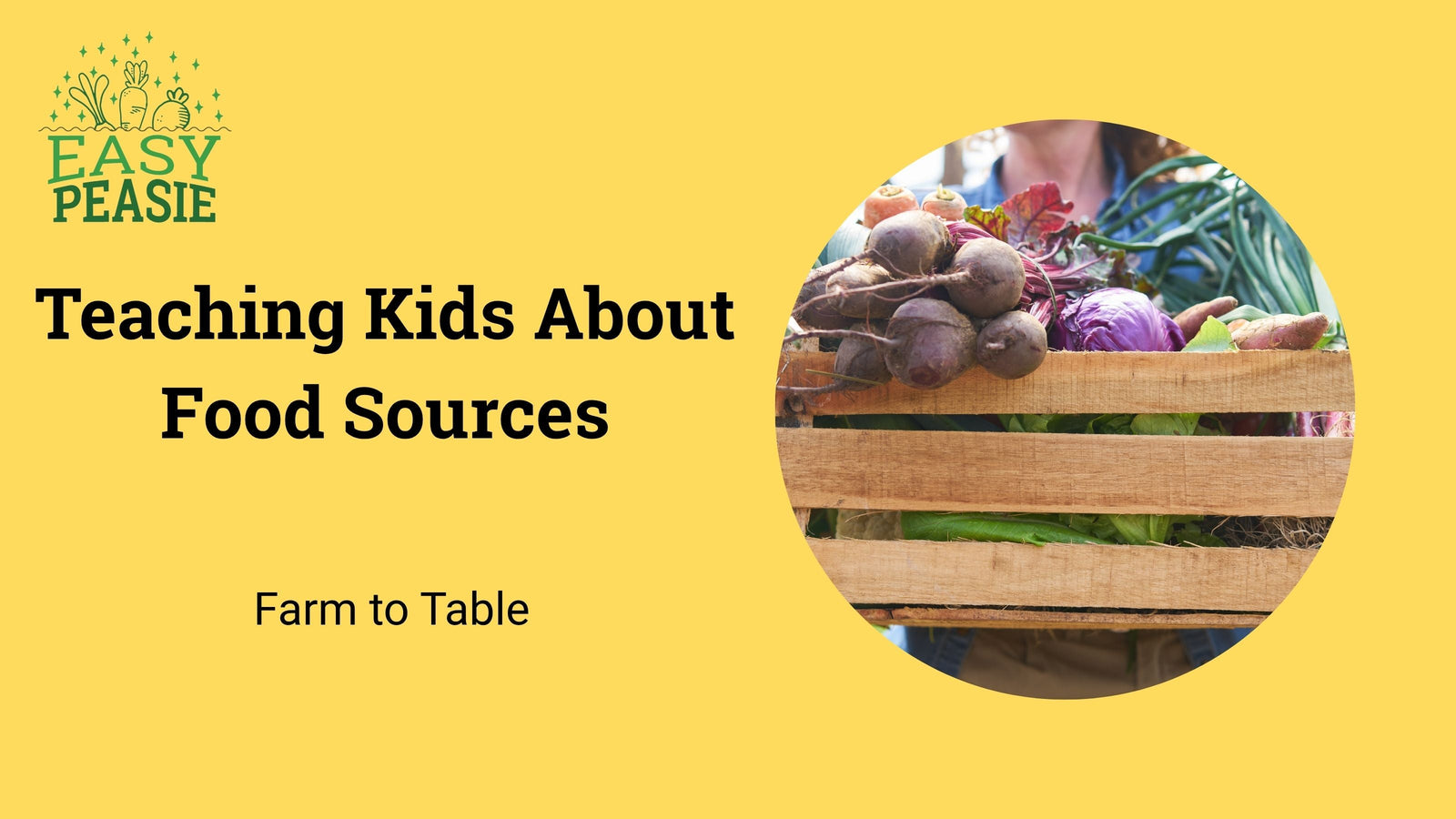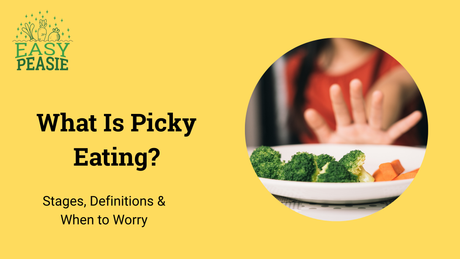Nurturing Young Minds Through Farm to Table Education
In today's fast-paced world, it's easy for children to lose touch with the origins of their food. This blog delves into the crucial importance of teaching kids about food sources and introduces the captivating concept of "Farm to Table" education.
The Importance of Teaching Kids About Food Sources
In a society dominated by convenience foods and disconnected from the sources of nutrition, educating kids about where their meals come from has never been more crucial. By understanding food sources, children gain a deeper appreciation for the nourishment on their plates, develop a sense of responsibility towards the environment, and make healthier food choices.
The Concept of "Farm to Table" and Its Significance
"Farm to Table" is more than just a trendy catchphrase; it's a philosophy that champions the direct connection between food producers and consumers. This approach emphasizes the transparency of the food supply chain, promotes sustainable agriculture, and encourages the consumption of locally sourced, fresh, and seasonal ingredients. Teaching kids the "Farm to Table" way instills in them a holistic understanding of food, from the seeds sown in the soil to the delicious dishes served at home.
Understanding Food Sources: Unveiling the Origins of Our Meals
Explaining Where Our Food Comes From
It's essential to start at the beginning. Kids often see food neatly packaged in stores, but they may not realize the journey it takes before reaching their plates. Break it down for them: crops grow in fields, animals are raised on farms, and some foods even come from the sea. By connecting the dots, children can grasp the simple yet profound concept that food doesn't magically appear; it's cultivated and nurtured by farmers and producers.
Highlighting the Journey from Farm to Table
The "Farm to Table" journey is an exciting adventure to narrate to kids. Describe how fruits and vegetables are carefully harvested, how cows provide milk for dairy products, and how grains are milled to make bread.
Share stories of farmers and fishermen, and explain how these hardworking individuals play a crucial role in bringing delicious, nutritious ingredients to our tables. This narrative captures a child's imagination and creates a sense of wonder about the origins of food.
The Benefits of Connecting Kids with Food Sources
Teaching kids about food sources offers a host of advantages. It fosters a greater appreciation for the effort that goes into food production, encouraging gratitude for the nourishment they receive. Furthermore, it allows them to make informed choices about what they eat, promoting healthier eating habits from an early age.
Understanding food sources also empowers children to engage in conversations about sustainability, where they can learn how their food choices impact the environment. Overall, it's an educational journey that's both enlightening and empowering for young minds.
Visiting Local Farms: A Fun and Educational Experience for Kids
The Value of Farm Visits for Kids
One of the most effective ways to teach kids about food sources is by taking them directly to the source - local farms. Farm visits offer an invaluable opportunity for children to see, touch, and even taste the food they've learned about. It's a sensory experience that can instill a deep connection to the origins of their meals.
As they explore the farm, kids gain a newfound appreciation for the hard work that goes into producing the food they love.
Tips for Organizing Farm Trips
Planning a successful farm visit involves a few key considerations. First, research and choose a local farm that's kid-friendly and offers educational tours. Coordinate with the farm to schedule a visit, ensuring it aligns with your child's age and interests.
Before heading out, pack essentials like sunscreen, water, and comfortable shoes for the family. During the visit, encourage questions and active participation to make the experience engaging and informative.
What Kids Can Learn from Hands-On Experiences
The beauty of farm visits lies in the hands-on experiences they provide. Kids can pick fruits, gather eggs, pet farm animals, and witness the planting and harvesting processes. These activities not only make learning fun but also offer a practical understanding of how food is grown and cultivated.
It's a chance for children to see the faces behind their food, fostering a sense of community and responsibility towards local food sources. Farm visits are a powerful tool for teaching kids the valuable lessons of sustainability, stewardship, and the importance of supporting local agriculture.
Gardening at Home: Cultivating Little Gardeners
Starting a Home Garden with Kids
One fantastic way to connect kids with food sources is by starting a home garden together. Whether you have a spacious backyard or just a small balcony, there are various ways to get kids involved in gardening.
Start by selecting age-appropriate plants or herbs that are easy to grow, like tomatoes, basil, or strawberries. Allow your child to choose what they'd like to plant; this sense of ownership can make gardening more exciting for them.
Teaching Gardening Basics and Responsibility
Gardening with kids is not just about the end result; it's a valuable learning journey. Teach them the basics, from preparing the soil and planting seeds to watering, weeding, and watching the plants grow. Gardening instills responsibility as children learn to care for their garden.
They'll understand the importance of providing sunlight, water, and nutrients for plants to thrive. This hands-on experience can be a gateway to a deeper understanding of where food comes from and the effort involved in its cultivation.
Growing Your Own Food and Understanding the Process
Watching plants grow and eventually harvesting fruits, vegetables, or herbs from your own garden is a powerful learning experience for kids. It demystifies the food production process and connects them directly to their meals. When children actively participate in growing their food, they're more likely to appreciate its value and taste.
Additionally, gardening promotes a sense of self-sufficiency and sustainability, as you reduce reliance on store-bought produce. Home gardening is a rewarding activity that not only educates kids about food sources but also encourages healthy eating habits and an appreciation for nature.
Farmers' Markets and Community Gardens: Outdoor Learning Adventures
Exploring Farmers' Markets with Kids
Visiting local farmers' markets with your children can be a delightful and educational experience. It allows them to see where food is grown and meet the people who produce it. Encourage kids to ask questions to farmers about their products, cultivation methods, and seasonal variations. This interaction fosters a connection between children and food sources, making the concept of "Farm to Table" more tangible. Additionally, farmers' markets often offer fresh, locally-grown produce, which can be a fantastic opportunity to introduce your child to new fruits and vegetables.
Involvement in Community Garden Projects
Many communities have embraced the idea of community gardens where residents come together to cultivate and harvest fresh produce. Involving kids in such projects provides hands-on experience and fosters a sense of community and shared responsibility. Community gardens offer a unique opportunity for children to learn about teamwork, environmental stewardship, and the rewards of growing their food.
By participating in the cultivation process alongside neighbors, children can witness firsthand how food goes from soil to table.
The Educational Aspects of These Experiences
Both farmers' markets and community gardens offer valuable educational experiences for kids. They can learn about the diversity of produce, the seasons in which certain fruits and vegetables are available, and the importance of supporting local farmers and sustainable agriculture. These outings provide a practical understanding of the Farm to Table concept.
Plus, children can engage their senses by touching, smelling, and even tasting fresh, locally-grown produce, making learning about food sources a multisensory adventure. Whether you're exploring farmers' markets or joining community garden initiatives, these experiences enrich your child's knowledge and appreciation of where their food comes from.
Cooking Together: A Delicious Path to Food Source Awareness
The Role of Cooking in Understanding Food Sources
Cooking is a fantastic way to bridge the gap between food sources and your child's plate. When children participate in meal preparation, they gain a deeper understanding of the ingredients used and their origins.
You can start by discussing where each component comes from, whether it's vegetables from the garden, eggs from the local farm, or grains from the store. Cooking together not only enhances their knowledge of food sources but also instills a sense of responsibility and self-sufficiency.
Simple Recipes and Cooking Activities for Kids
Simplify cooking activities to make them accessible and enjoyable for kids. Start with age-appropriate tasks like washing vegetables, measuring ingredients, or mixing. Gradually introduce them to basic cooking techniques, such as chopping, sautéing, or baking.
Choose recipes that incorporate ingredients your child is familiar with and those they've learned about through farm visits, gardening, or farmers' market trips. From creating a vegetable stir-fry to baking whole-grain bread, there are numerous kid-friendly recipes that promote both culinary skills and food source awareness.
Encouraging Kids to Be Part of Meal Preparation
Encourage your child's involvement in meal preparation as a regular family activity. Allocate specific roles for them, such as setting the table, choosing recipes, or creating personalized salads with ingredients they've grown or sourced. This not only boosts their confidence but also reinforces the Farm to Table concept by demonstrating how each family member contributes to the meal.
Cooking together fosters a sense of togetherness, making mealtimes a meaningful opportunity to connect with your child and share food source knowledge.
Storytelling and Educational Resources: Nourishing Young Minds
Using Stories and Books to Teach About Food Sources
Stories have a unique way of captivating young minds and conveying important messages. Incorporate books and storytelling into your food education efforts. Look for children's books that focus on farm life, gardening, or the journey of food from source to table.
Reading these stories together provides an engaging way to introduce kids to the concept of food sources. After reading, discuss the characters, their experiences, and how they relate to real-life scenarios. Encourage your child to ask questions and express their thoughts about the story, fostering a deeper connection to the subject.
Educational Resources, Documentaries, and Online Tools
In today's digital age, there is a wealth of educational resources available to teach kids about food sources. Explore documentaries that showcase the farming process, sustainability, and the importance of local food. Interactive websites and apps designed for children often feature games, videos, and quizzes that make learning about food sources fun.
Additionally, look for virtual tours of farms or interactive maps that allow your child to explore where different foods come from around the world. These resources can complement hands-on experiences and offer valuable insights.
Incorporating Storytelling into Food Education
Storytelling is a powerful tool in food education. Share stories about your own food-related experiences, such as family recipes passed down through generations or memorable trips to farmers' markets. Encourage your child to create their food-related stories, whether through drawings, journals, or storytelling sessions.
These personal narratives help children connect with food sources on a deeper level and understand the cultural and emotional aspects of what they eat. By weaving storytelling into food education, you foster a lifelong appreciation for where food comes from and the stories behind each meal.
Sustainability and Food Choices: Cultivating Responsible Little Eaters
Teaching Kids About Sustainable Food Choices
Sustainability is a vital aspect of food education, even for the youngest learners. Start by explaining the importance of sustainable food choices to your children. Discuss how choosing foods that are grown locally, without harmful chemicals, and in ways that protect the environment can make a positive impact.
Encourage them to ask questions about where their food comes from and how it's produced. Teach them that their food choices can support farmers and practices that prioritize sustainability.
The Impact of Food Choices on the Environment
It's essential to help kids understand the connection between their food choices and the environment. Share age-appropriate information about how certain farming practices can harm ecosystems, water quality, and wildlife. Explain the benefits of organic farming, responsible fishing, and reducing food waste. Engage them in discussions about climate change and how our food choices can contribute to a healthier planet. As they grasp these concepts, they'll become more conscious consumers who actively seek out sustainable options.
Encouraging Mindful Eating and Responsible Consumption
Encourage mindful eating from an early age by teaching kids to savor their food and appreciate the effort that goes into growing it. Discuss portion sizes and the importance of not wasting food. Show them how to read food labels, emphasizing the significance of choosing products with eco-friendly certifications.
Engage in conversations about food packaging and the benefits of reducing single-use plastics. By fostering these habits, you empower your children to make responsible and sustainable food choices that benefit both their health and the environment.
Creating Lifelong Food Awareness: Nurturing Little Foodies for Life
Fostering a Lifelong Appreciation for Food Sources
The goal of Farm to Table education isn't just to provide kids with knowledge; it's about instilling a deep and lasting appreciation for food sources. Encourage your children to maintain a sense of wonder about where their food comes from as they grow. Visit farms, farmers' markets, and community gardens regularly to keep their curiosity alive.
Celebrate food as a source of nourishment, cultural connection, and joy. By nurturing this appreciation, you set the stage for a lifetime of mindful eating and a genuine connection to the sources of their food.
Continuously Educating Kids About the Food System
Food education isn't a one-time lesson; it's an ongoing journey. As your children mature, deepen their understanding of the food system by exploring more complex topics. Discuss global food supply chains, food justice issues, and the importance of supporting local farmers and artisans. Encourage them to stay informed about food-related news and challenges. By continuously educating your kids about the food system, you equip them to make informed choices and advocate for a healthier, more sustainable future.
The Long-Term Benefits of Farm to Table Education
The benefits of Farm to Table education extend far beyond childhood. When kids grow up with a strong connection to food sources, they are more likely to become responsible, mindful consumers who prioritize their health and the environment. They carry these values into adulthood, making informed food choices and supporting sustainable practices.
This lifelong awareness not only benefits their well-being but also contributes to the larger goal of creating a more sustainable and equitable food system for generations to come. By sowing the seeds of food awareness today, you're nurturing a healthier and more conscientious tomorrow.
Cultivating Food Knowledge for Kids
Recap of Key Points
In this article, we've explored the exciting world of Farm to Table education and how it can benefit kids. We began by emphasizing the importance of teaching children about food sources and how the Farm to Table approach can transform their relationship with food. Understanding where our food comes from is not just a matter of knowledge; it's about fostering a lifelong appreciation for the nourishment that sustains us.
We discussed various strategies for teaching kids about food sources, including visiting local farms, starting home gardens, exploring farmers' markets and community gardens, cooking together, using stories and educational resources, and promoting sustainability and responsible food choices. By engaging in these activities, parents and caregivers can empower children to connect with their food in meaningful ways.
Emphasizing the Importance of Farm to Table Education
Farm to Table education is more than a trend; it's a vital aspect of raising informed, conscious, and health-conscious individuals. Teaching kids about food sources through hands-on experiences, storytelling, and sustainable food practices equips them with valuable life skills. It fosters a sense of responsibility toward the environment and their own well-being.
As our world faces complex food-related challenges, such as sustainability and food justice, the lessons learned in childhood can pave the way for positive change.
Encouragement to Start Teaching Kids About Food Sources Today
The journey of teaching kids about food sources begins now. Whether you're exploring local farms, planting seeds in a home garden, or simply sharing stories about food origins, every effort counts. Start small, build curiosity, and nurture a sense of wonder about the food that nourishes us.
Remember that this education is an ongoing process, one that evolves as children grow and learn. By planting the seeds of knowledge today, you're sowing the foundation for a healthier, more connected, and more sustainable future for your children and the generations to come. So, let's embark on this delicious journey together and watch our little foodies grow into informed and mindful eaters!





